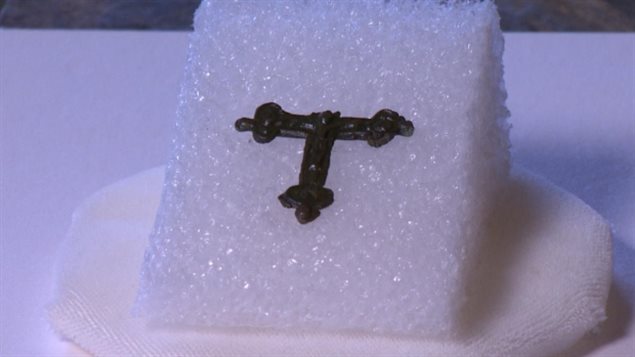A tiny crucifix is a big discovery in Newfoudland, as Anna Sparrow is learning.
The undergraduate student at Memorial University, in St. John’s, Newfoundland, made the discovery in early July. At Ferryland site, on the Avalon Peninsula, she had spent hours sifting through the dirt finding many pieces of broken pottery and glass.
“As I was sifting, I was cleaning off a clump of dirt and in that clump was this crucifix, this tiny little crucifix.”said Sparrow in an interview with CBC.

Made of copper, the partial crucifix is three centimetres wide. The top portion is missing, but one side depicts the crucifixion of Christ, on the other side is the Virgin Mary.
Birthplace of religious tolerance in British North America
Sparrow’s professor, Barry Gaulton, said the Catholic cross in an English settlement is a significant discovery. He said, “Back in England, you could be fined, imprisoned or put to death for practising Catholic faith, so Calvert had different plans for Newfoundland and one of his plans was religious toleration, religious freedom. This artifact is a direct manifestation of that toleration, so it’s an important part of Canadian history.”
Baron George Calvert of Baltimore, England was the Governor of the colony in Newfoundland, in the early 1600’s. It is considered one of the best-preserved early English colonies in North America.







For reasons beyond our control, and for an undetermined period of time, our comment section is now closed. However, our social networks remain open to your contributions.